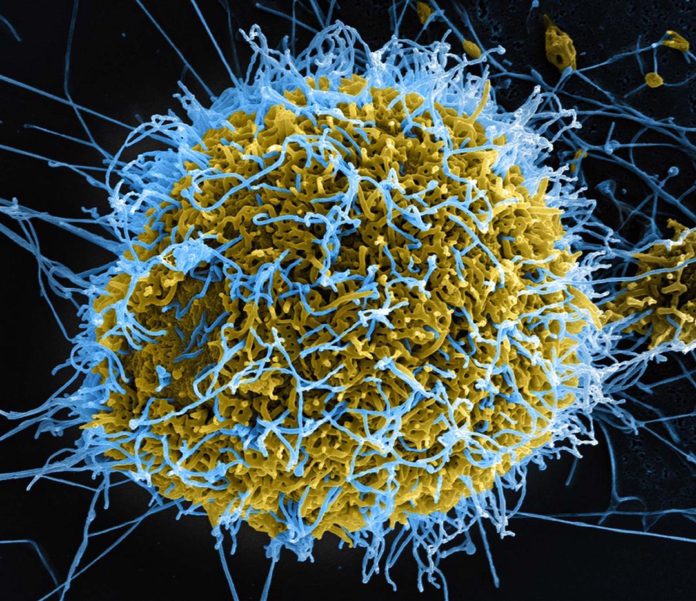Ebola virus disease (EBOLA) is a fulminant hemorrhagic disease caused by Ebola virus. First discovered in 1976 in a village of the Democratic Republic of Congo (DRC) bordered by the Ebola river called Yambuku, 24 outbreaks have been recorded since then, of which West Africa has been the most badly hit between December 2013 and January 2016 with a case count of over 28,000 with 11,000 deaths until March 2016 when it was no more declared as a health emergency by World Health Organization(WHO).
Graciously and thankfully, Ghana was spared. On Monday, February 15, 2020, WHO announced that DRC had 4 new EBOLA cases as of February 7, together with Ghana’s West African counterpart, Guinea, was plagued with 7 cases with 3 deaths, reiterated by a press release from Ghana Health Service (GHS) still on February 15.
Although EBOLA and COVID-19 are both RNA viral infections, there are notable differences. Firstly, according to WHO, EBOLA is more lethal with an average mortality rate of 50% meaning 1 out of 2 persons infected with EBOLA virus will die compared with less then 5% for COVID-19 meaning 1 death out of 20 morbid cases. Secondly, EBOLA can only be transmitted by individuals who are showing symptoms of EBOLA in contrast to COVID-19 where asymptomatic carriers in addition to persons showing symptoms (symptomatic carriers) of COVID-19 can transmit the disease to others. Thirdly, EBOLA is well studied and understood therefore has a tried and tested vaccine to prevent it, unlike COVID-19 which is still in evolution and yet to be fully understood.
The time frame between infection with the virus to onset of symptoms, being the incubation period, of EBOLA is 2 to 21days. EBOLA is transmitted in 2 main ways. Firstly, by an indirect transmission that is animal to human transmission through a bite by, handling and eating of infected animals like fruit bats, grasscutters, antelopes etc. Secondly, by direct transmission through infected symptomatic human to another human predominantly by body fluids for example tears, nasal discharges and droplets, vomitus, sweat, breast milk, faeces, genital fluids, blood and discharges from pre-existing skin sores through kissing, hugging, shaking of hands and sexual intercourse. Among these, body fluids sweat has the viral load with saliva topping the chat.
EBOLA infected persons may have sudden onset constitutional symptoms like fever, headache, sore throat, vomiting, loss of appetite, diarrhoea, fatigue, abdominal pains, muscle pains, joint pains. In severe cases, unfortunately, infected individuals have dramatic symptoms like seizures, severe breathlessness, intense thirst, bleeding from eyes, nose, mouth, butthole and failure to pass urine for a long time due to kidney shutdown. EBOLA like COVID masquerade common diseases like malaria and meningitis because they share the same constitutional symptoms stated above. Due to this known fact, early report of unexplainable bleeding with these constitutional symptoms listed above, to the health facility is crucial to saving lives, isolation of suspected cases and quarantining of exposed individuals who in the recent past have interacted with these individuals Calling of the active lines of GHS (toll-free lines 112 or 311) and Ministry Of Health And Ministry Of Information to give information on any suspected case will help in disease surveillance.
The key to prevention of EBOLA is mainly similar to that of COVID-19 which has been chorused for a while now namely regularly handwashing with soap under running water, using alcohol-based hand sanitisers, avoiding overcrowded places and social distancing, and the using of valveless nose masks, avoid incessant touching of one’s face and surfaces and through sharing of fomites like clothing. The silver lining in all of this is that stringent adherence to these preventive routines reduces your risk of contracting the Ebola virus just like coronavirus.
Border towns in Ghana which includes Elubo in the Western region, Paga in the Upper East region, Hamale in the Upper West region are at a greater risk population than that of inland cities because of their proximity with Guinea although separated by Ivory Coast, a direct neighbour to Ghana and free flow of humans, trade and services. I’ll entreat the populace to be on the lookout for recent returnees especially from neighbouring West African countries like Guinea, Guinea Bissau, Gambia, Sierra Leone, Liberia, Senegal, Ivory Coast, Togo, Burkina Faso, Niger, Chad, Mali, Benin, Nigeria, and Cameroon showing the aforementioned symptoms to report swiftly and to be collaborative in contact tracing.
MICHAEL BAAH BINEY
Medical Student, UDS
mikebiney77@gmail.com

Michael Baah Biney is an advocate for healthy practices. His goal is to aid in the advocacy of preventing diseases before complications arise. In his bid to champion healthy living, Michael has volunteered with UNFPA, PPAG among others to share knowledge and mentor young people. He is currently a final year medical student of the University for Development Studies, Tamale and a member of Curious Minds Ghana.















